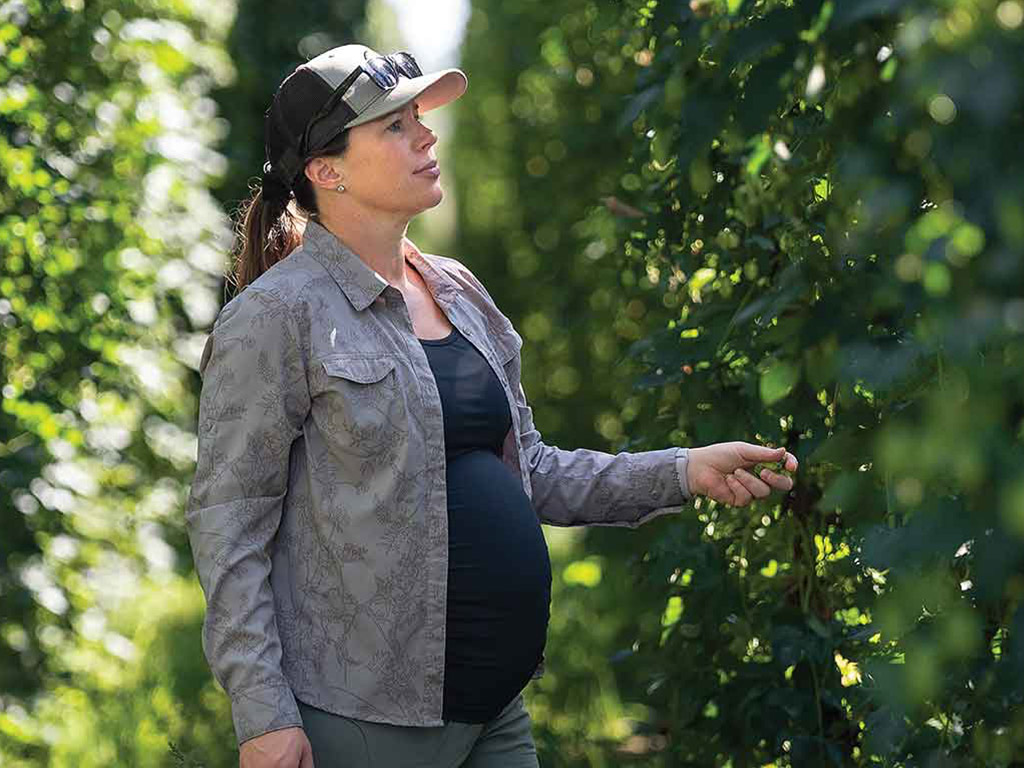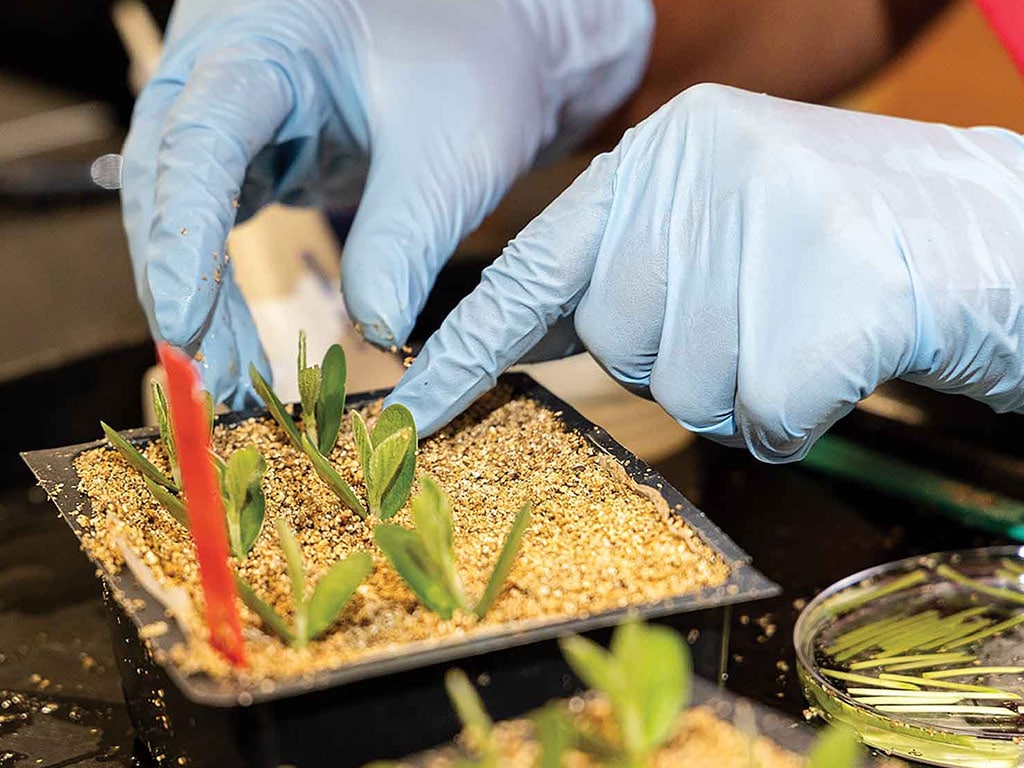Agriculture, Education April 01, 2024
SCN Slayers
How scientists are developing new ways to beat this billion dollar pest.
by Gil Gullickson
On paper, managing soybean cyst nematode (SCN) seems easy. Just plant an SCN-resistant variety, right?
Not exactly.
Granted, this strategy remains the best way to deter this pest, who costs U.S. soybean farmers more than $1 billion annually in lost yield.
Still, remember Roundup Ready soybeans? They initially spawned flawless weed control. Eventually, though, one-in-10-million biotypes that resisted glyphosate multiplied. Glyphosate resistance soon exploded.
SCN resistance faces a similar fate. Approximately 95% of SCN-resistant varieties share the same source of resistance—PI 88788. Just as with Roundup Ready soybeans, continual use of the same control is resulting in virulence changes in SCN populations. This enables SCN to overcome SCN-resistant genes and spur a genetic shift in SCN (Heterodera glycines or HG) type populations.
It's easy to see herbicide resistance due to weeds proliferating before your eyes. Not so with SCN.
"You can walk through a field infested with soybean cyst nematode and not see anything," says Melissa Mitchum, a University of Georgia (UGA) nematologist. By the time a farmer notices SCN infestation symptoms of stunted and pale plants, yields have plunged.
How resistance works. The way nematodes evade or suppress genetic resistance is through stylet secretions—a fancy word for nematode spit. This makes proteins that modify plant tissue and suppress the immune response. SCN then establishes a feeding site where it migrates into a soybean root. Eventually, the soybean plant weakens.
Genetic resistance degrades the feeding site that a nematode establishes when it migrates into a soybean cell. "Without the feeding site, the nematode doesn't survive," says Mitchum.
The good news is PI 88788 still works in many cases. Farmers just need to rotate to non-host crops and plant soybeans with alternative resistance sources, such as Peking.
Zenglu Li, a UGA soybean breeder, points to one promising Peking variety currently in seed production in UGA tests.
"Its [yield] performance is excellent," he says. "It not only has an alternative SCN source, but it's teamed with herbicide tolerance that farmers want."
Still, the story behind alternative resistance isn't that simple. Genes fuel SCN resistance sources.
"The reason PI 88788 has been so popular among seed companies is it has just one gene," says Mitchum. "Soybean breeders gravitate to [resistance with] one gene because it is easier to work with."
Besides the resistance developing from repeated use, single genes miss controlling certain nematode types. For example, HG Type 1.2.5.7 and 2.5.7 SCN can reproduce on PI 88788, fueling a rise in future SCN infestations.
Peking resistance deters more SCN HG types because its resistance is fueled by several genes.
Still, its multiple gene resistance makes introgression into soybean varieties more complicated. Like PI 88788, overuse will ultimately result in resistance, adds Mitchum.
Resistance to SCN-resistant varieties could be forestalled if more resistant genes could be discovered and pyramided into resistant varieties.
One surfaced last year. A team of scientists from UGA, USDA, and the University of Missouri funded by the soybean checkoff discovered a previously unknown resistance gene, GmSNAP02.
This will be teamed with CRISPR-Cas9 technology to make it easier for breeders such as Li to develop soybean varieties with enhanced SCN resistance.
Mitchum notes pyramiding multiple resistant genes could not only be more difficult for SCN to resist, but also nix SCN from laying eggs for future infestations.
"Introgressing this into a soybean cultivar would take time," says Li. However, new technologies such as molecular markers can accelerate the breeding cycle so these varieties can enter the market with no yield drag, he adds.
Researchers also now know where resistant genes are located on the soybean chromosome. In driving terms, the chromosome acts as the highway as molecular markers tell the driver where to go, says Li.
"Molecular markers help us introgress genes into high-yielding cultivars while improving breeding selection," he says.
There's also good news on the genome front regarding SCN. Virulence genes that enable SCN to reproduce on resistant soybeans have been mapped. This opens the door for prescriptive management, particularly when teamed with molecular markers that identify SCN virulence, says Mitchum.
"A grower would take a sample from which we could determine the population and what the virulence is," says Mitchum. "We could determine what genetic combination to use."
Above. Zenglu Li, UGA soybean breeder, is placing alternative sources of SCN resistance into new varieties. Microscopic images reveal soybean cyst nematode (SCN) that ravages U.S. soybean fields. Mekidani Jacob Salu, a University of Georgia (UGA) graduate student in nematology, examines SCN under the microscope. Melissa Mitchum, a UGA nematologist, notes new SCN-resistant genes are on the way.
Check out this new tech. Other promising technologies include cassettes. This enables breeders to place a gene stack that combines genes that confer SCN resistance with those that confer resistance to other diseases, she says.
RNAi technology is also being evaluated. This reduces the expression of a plant or nematode gene that SCN needs to survive.
Additionally, researchers are using synthetic biology where they alter genetic pathways, akin to an engineering circuit, she says.
BASF has obtained registration from the Environmental Protection Agency for an SCN transgenic trait. It expresses a novel Bt protein, Cry14Ab-1, that will be part of the GMB151 SCN trait bred into SCN-resistant varieties. It's expected to debut later this decade.
Future challenges. Genes that spur SCN resistance face the same challenge as herbicide sites of action do in the herbicide-resistance space. There just aren't that many of them.
That's why it's important to rotate soybeans with different resistance genes in order to slow development of resistant SCN, says Mitchum. ‡
Read More

AGRICULTURE, FARM OPERATION
Good to the Next Hop
Growing for six generations.

AGRICULTURE, SUSTAINABILITY
Ups & Downs
What past water level swings have taught us.






